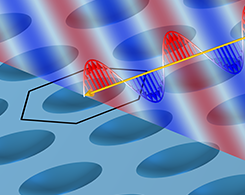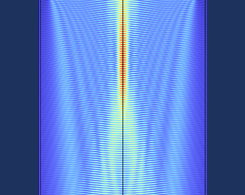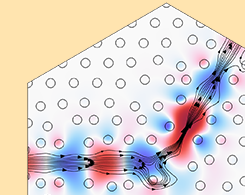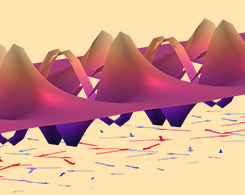Wave Optics Blog Posts

Exploiting Symmetries in RF and Wave Optics Modeling
We can simplify and reduce the size and computational complexity of a wave electromagnetics model by taking advantage of any symmetries it may have. Learn how to do so here.

From Spectrum to Color: Using Modeling to Understand How Red Glass Is Made
How is red glass made? We answer this question by examining the transmission spectrum with wave optics modeling.

Tracking Eigenmodes over Parametric Sweeps
In this blog post, we explore how to easily identify, sort, and group eigenmodes across many parameter cases when performing a mode analysis.

Modeling a Hyperbolic Wave in a Layered Metal–Dielectric Metamaterial
Learn how model a metamaterial made of thin layers of periodically organized silver and silicon dioxide and calculate its permittivity tensor components.

Understanding Higher-Order Diffraction
Explore how to use the Ewald sphere to study diffraction from planar periodic structures. (Interact directly with the model to get the full picture!)

Building a Metalens Design App with COMSOL Multiphysics®
Here, we explore how to build a simulation app for reflective metalens design, which can easily be compiled into a standalone app.

Shape Optimization in Electromagnetics: Part 1
Learn how shape optimization can be used to improve the designs of wave optics applications. Part 1 of 2.

Modeling Surface Plasmon Polaritons in COMSOL®
Due to their potential applications in nanoscale manipulation of light, surface plasmon polaritons (SPPs) are of great research interest. Learn how to model them here.
